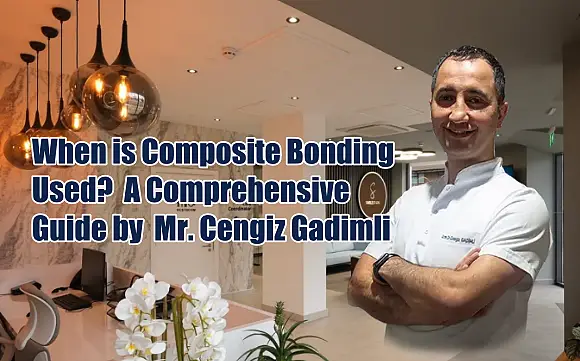Asked by Mr. Cengiz Gadimli
Composite bonding is a versatile and minimally invasive dental procedure that uses tooth-colored resin to restore or enhance the appearance and function of teeth. At Smilespark Dental Hospital, led by renowned dentist Mr. Cengiz Gadimli, this treatment is tailored to address both aesthetic concerns and functional issues. Below, we explore the key applications of composite bonding and why it might be the ideal solution for your dental needs.
Aesthetic Applications of Composite Bonding
1. Fixing Chipped, Cracked, or Worn Teeth
Accidents, grinding, or aging can leave teeth chipped or worn. Composite bonding seamlessly repairs these imperfections, restoring a natural look without the need for extensive procedures.
2. Closing Gaps Between Teeth (Diastema Closure)
Small gaps between teeth can be closed quickly with bonding, creating a harmonious smile. This is a popular alternative to orthodontic treatments for minor spacing issues.
3. Covering Stains or Discoloration
Teeth resistant to whitening treatments due to intrinsic stains or uneven color can be covered with composite resin, providing a uniform, bright appearance.
Functional Uses of Composite Bonding
1. Treating Small Cavities
Bonding is an effective solution for small cavities, replacing amalgam fillings with a discreet, durable alternative that blends with natural teeth.
2. Restoring Teeth Damaged by Bruxism
Grinding can wear down enamel. Composite bonding rebuilds tooth structure, protecting against further damage while improving aesthetics.
3. Reshaping Irregular or Short Teeth
Misshapen or uneven teeth can be contoured and lengthened with bonding, enhancing both function and smile symmetry.
Benefits of Composite Bonding
- Minimally Invasive: Preserves natural tooth structure.
- Quick Results: Often completed in one visit.
- Cost-Effective: More affordable than veneers or crowns.
- Natural Appearance: Resin mimics tooth enamel.
The Composite Bonding Procedure
At Smilespark Dental Hospital, the process involves:
- Consultation: Assessing your needs and planning treatment.
- Preparation: Etching the tooth surface for adhesion.
- Application: Layering and sculpting the resin.
- Curing & Polishing: Hardening with a light and refining the shape.
Aftercare Tips for Long-Lasting Results
- Avoid staining foods/drinks (e.g., coffee, red wine) for 48 hours.
- Refrain from biting hard objects (e.g., ice, pens).
- Maintain oral hygiene with regular brushing and flossing.
- Schedule routine dental check-ups at Smilespark Dental Hospital.
Why Choose Smilespark Dental Hospital?
Under the expertise of Mr. Cengiz Gadimli, our team combines advanced techniques with personalized care. Whether addressing cosmetic concerns or functional repairs, we prioritize your comfort and satisfaction.
Book your consultation today via our website or call 020 8175 4878.
Conclusion
Composite bonding offers a flexible solution for enhancing your smile’s aesthetics and functionality. For expert care in London, trust Mr. Cengiz Gadimli and Smilespark Dental Hospital. Contact us to explore how bonding can transform your teeth.


